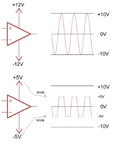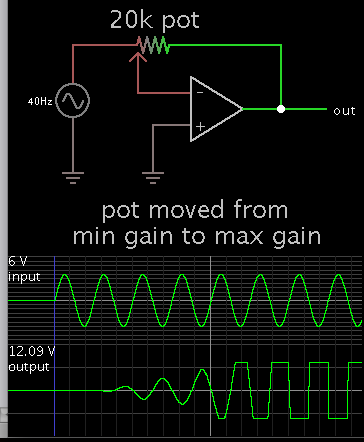preethi19
Full Member level 5
Hi i understand opamp for an inverting config would result in a gain in -ve with a negative output voltage and the output will be out of phase in the inverting config. While for an non-inverting config the gain is +ve and the output signal is in phase with the input. Even if the output is -ve for an inverting config the signal peak still goes upto the output's voltage value (-VCC). Though negative peak amplitude this is still not an attentuated signal. It just has a negative voltage swing. But could anyone kindly let me know when and why does an op-amp attenuate a signal. I know attenuation occurs when say the supply voltage is like 5V and we are requiring a 10V output as shown in the figure. the output saturates at 5V since it cant go beyond the supply. But say if the supply voltage can provide full output swing then at what cases do attenutation occur. I thought op-amps are only meant for amplification. What benefit do we get by an attenuated signal??? Or is attenuation not a desired factor???? Thank you!!!

Additionally i found "When using an amplifier as an attenuator, the amplifier has less than unity gain (G < 1)." Found it in this website https://www.analog.com/en/education/education-library/raqs/raq_attenuator_issue56.html
So Say inverting config provides gain less than unity. say for instance -10 gain. So does this mean signals are generally attenuated in an inverting config???. Its a bit confusing pls help!!!

Additionally i found "When using an amplifier as an attenuator, the amplifier has less than unity gain (G < 1)." Found it in this website https://www.analog.com/en/education/education-library/raqs/raq_attenuator_issue56.html
So Say inverting config provides gain less than unity. say for instance -10 gain. So does this mean signals are generally attenuated in an inverting config???. Its a bit confusing pls help!!!
Last edited:

